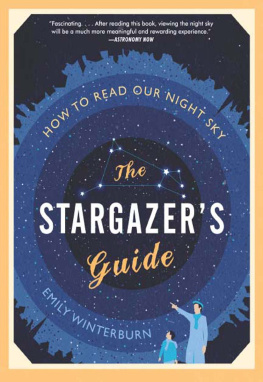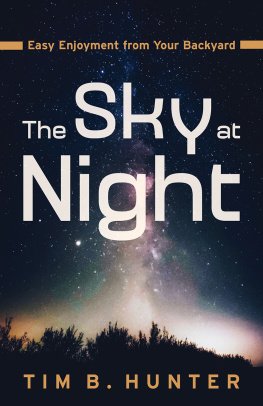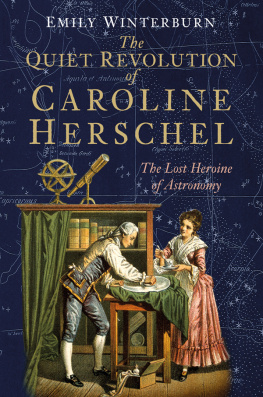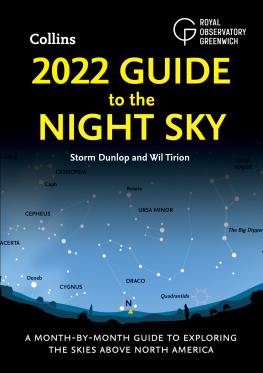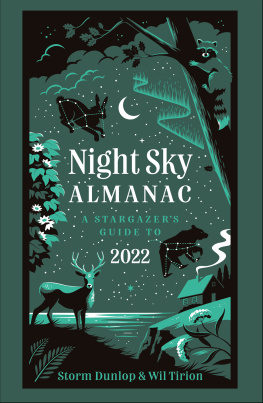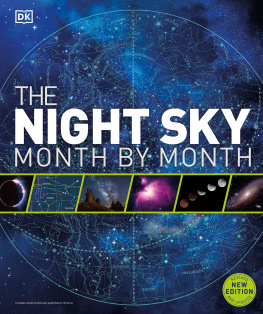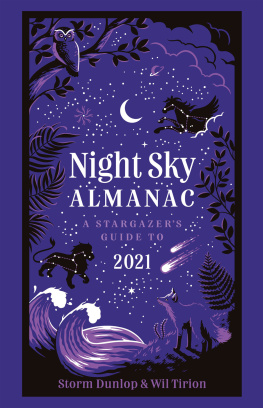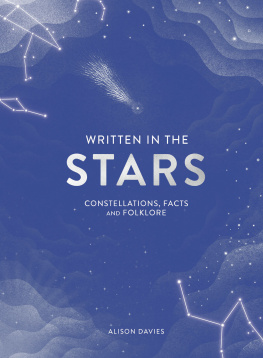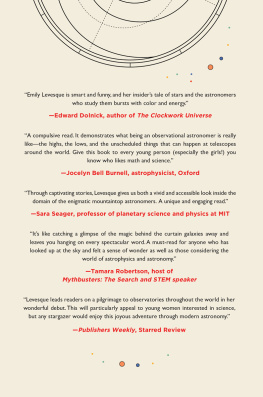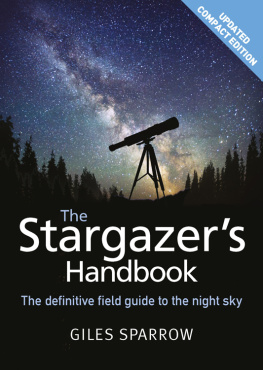Starry, Starry Night
A STARRY SKY, LIKE THE OCEAN , has the capacity to fill us with wonder. When we stand in a field, the mountains, a desert or even by the sea and look at the stars without the interference of street lighting it is easy to feel overwhelmed. The whole vast universe is in front of usor at least as much of it as the naked eye can see. This is in itself both beautiful and fascinating. But a little knowledge of the history and science of the night sky can help us appreciate it even more.
Stargazing is in many ways an exercise in visual history. When we look at the stars, we are actually looking at the past. The patterns we use today to navigate our way around the sky come not from modern research but from stories created by earlier culturesour understanding of individual stars comes from centuries of accumulated research and evolving stories. More than this, we only see the stars as they looked when the light now reaching our eyes left them: we cannot see them as they are at the moment. Aldebaran in Taurus, for example, a star sixty-five light years away, looks to our eyes as it appeared sixty-five years ago.
There have always been stargazers, people interested simply in knowing a little more about what they can see in the night sky. Indeed, it seems to be an almost universal human pastime to look up and wonder at the stars. Astronomy, the more scientific branch of this activity, was for a long time viewed as the practical arm of astrology. While astronomers kept careful and accurate records of the position of every star, planet and comet in the sky, astrologers interpreted those data to predict the future for leaders and later for the paying public. As astronomers in the late seventeenth and eighteenth centuries began to discredit astrologers claims, astronomy lectures, books and games became popular as a form of rational recreation. It became fashionable to spend ones evenings learning the names and stories associated with the stars and constellations (or star patterns) and to discuss the latest astronomers new theory or discovery. Astronomers were celebrities and attending lectures was the height of fashion.
I love the idea that having some knowledge of science, and astronomy in particular, was once so hip. As a rather unfashionable adolescent I spent many evenings sitting through science lectures at Birkbeck College and the Royal Institution, very much a fringe activity at the time. It was only much later I discovered that in the 1790s I might have been considered right on trend.
Astronomy, as one of the oldest sciences, has a long and appealing history. So for me, this book is an opportunity to delve into past ways of telling the many stories associated with the sky, to tell them for a twenty-first-century audience, bringing the joys of stargazing to a whole new generation.
At university I studied physics, with a little astronomy thrown in. As curator of an astronomy collection (at the Royal Observatory in Greenwich) I have spent the last ten years learning about and explaining to others what there is to see in the sky, why its interesting and how previous generations have viewed and interpreted it.

This print, entitled The Kentish hop merchant and the lecturer on optics, dates from the early 1800s. ( The College of Optometrists)
Just recently, Ive been working on an exhibition about telescopes and their enduring attraction. As part of the research I was discussing the project with an artist who has worked on a number of astronomical installations. He pointed out that, in many ways, people generally know less now about astronomy than ever before. We live in cities and so rarely see many of the stars, much less the Milky Way. Our everyday experience of power sources comes not from tides and the flow of rivers (which are in turn tied to the movements of the Moon) but from batteries and mains electricity; and we perhaps no longer seriously believe the stars and planets have any influence over our physical or mental well-being. But, both the artist and I agreed, things do seem to be changing. For a variety of reasons, were all more interested in our environment and many of us are taking real steps to re-engage with our natural world. Some knowledge of the stars, of their relationship to the seasons, to time and the natural rhythms of day and night, is an integral part of that undertaking. We may soon see the return of astronomyor at least stargazingas a popular pursuit.
Today we tend to think of the night sky as something beautiful to look at, something to be explored and, if the number of newspaper horoscopes is anything to go by, somewhere that reveals the future. Historically, the night sky has had more specific uses. It has been used to create and then regulate calendars and timepieces, to navigate on land and at sea and to aid medical diagnosis and treatment.
Ancient cultures used what they saw to tell stories that would explain how the Earth, sky and human life came into existence. Later cultures used the night sky to create stories about how the gods taught us to behave and how they shaped the details of the world we live in. Today modern astronomers use various tools to look into space and deep into the individual stars and star groupings before giving us scientific explanationswhat stars consist of, how they were made, how they will end, how they moveall of which informs the way we look at ourselves and the world.
Alongside the tales of creation and the interaction of gods and mortals came systematic record keeping. It was noted how the rising and setting of different stars and planets (or wanderers) related to the agricultural year. Gradually links were made; so, for example, the ancient Egyptians knew that with the pre-dawn rising of the star Sirius in Canis Major came the annual flooding of the Nile. Later the regular movements of the Sun and the stars were used to divide up the day and night into smaller units, then to tell the time, using sundials in the day and nocturnals and astrolabes at night.
As ships ventured into open oceans away from landmarks, the stars became increasingly important as the sailors only means of navigation. Knowledge of the stars gave them their basic north, south, east and west co-ordinates. The stars could also, when used with the right tables, give them their longitudethe distance east or west of an agreed point or meridian, today universally agreed to be Greenwich in London. On land, too, the stars have been used as a way of navigating deserts or other wildernesses without landmarks. Early scientific instruments show that the stars were also used, in the absence of a compass, to help travelling Muslims find Mecca.

